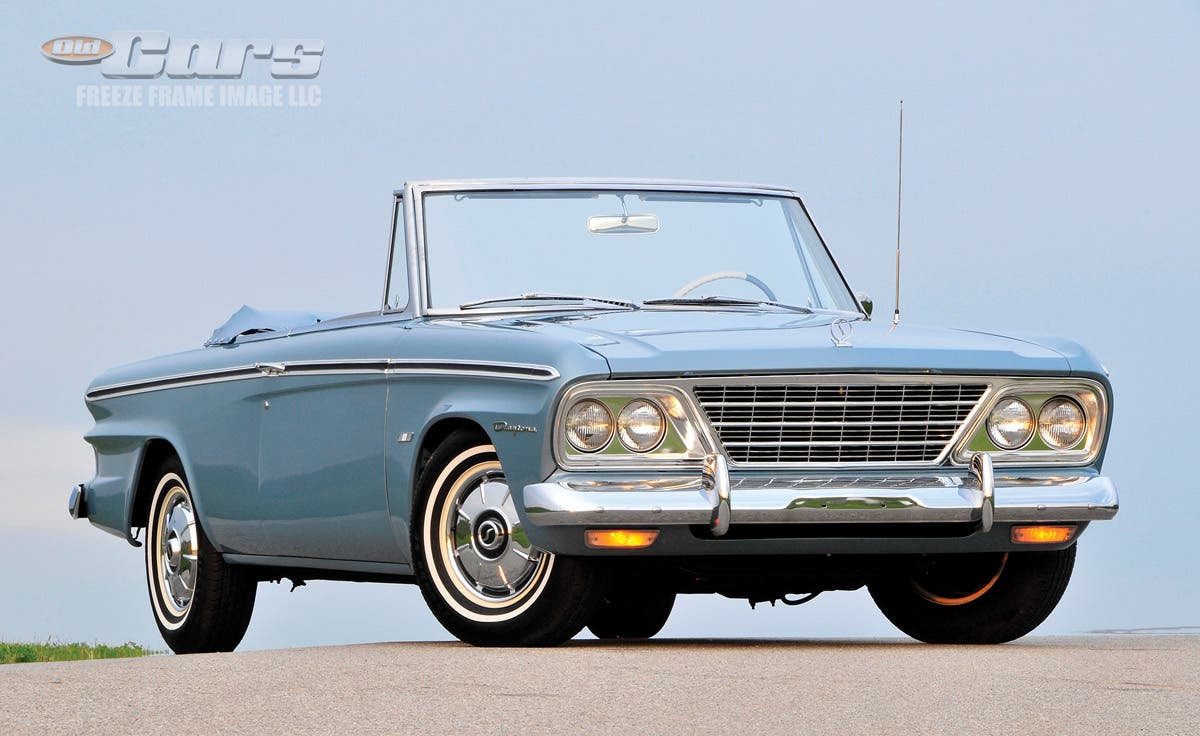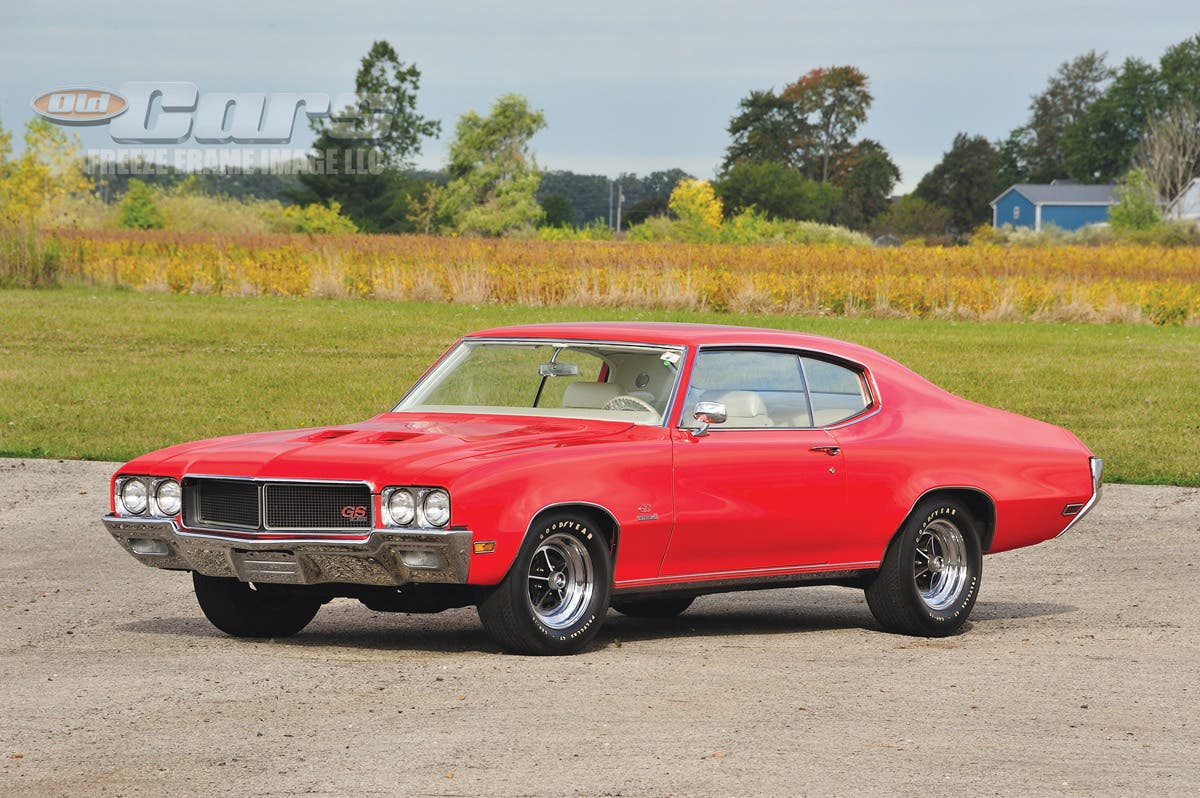Car of the Week: 1939 Buick Special coupe
The handsome 1939 Buick styling of the era has always held up well and the cars were some of the best-looking machines on American roadways.
Story and photos by Brian Earnest
If Jerry Allen’s brother hadn’t unknowingly blown a fan belt back when he was a teenager, Allen might not be having as much fun in life as he’s having these days.
The balky belt ultimately led to Allen getting the keys to his sibling’s 1939 Buick, which has accompanied him through the past 55-plus years and turned into a permanent toy that the Omro, Wis., resident never grows tired of.
It took many years for Allen to get the car into running condition and ultimately to the beautiful shape it’s in today, but the time and effort have certainly paid off. The sparkling ’39 coupe is a hit and any weekend car show and a continuing source of joy for its owner — in part because so many people doubted that he’d ever have the car back on the road.
“My brother had the car he’d take it down to the bar with the fellas and proved to them and he’d win bets for a case of beer that he could do 85 [mph] in second gear!” laughs Allen. “And he did that a number of times, and then one time he was coming back to the car and the car wasn’t running right, so he popped the hood and the manifold was cherry red. He broke the fan belt and the engine got hot.
“Well, he went into the service and the car sat their at my dad’s place and I asked him what he wanted to do with it because I liked it. It’s an opera coupe and a sport coupe and the seats fold up and I really liked it. He said, ‘Jerry, the motor smokes since I cooked it and it doesn’t run right, and I won’t be needing a car so you can have it.’ I think I paid him like $65 back in 1959 or ’60. And I covered it up and put a tarp over it.”
Allen quickly found out that he wasn’t the only one who liked the Buick. Some unwanted rodents also staked their claim to the idle coupe over that winter.
“The next spring I wanted to go get it and get it running, but I opened the door and the darn mice were in my ceiling. I slapped the ceiling and the mice were all in there squirming. It just blew my mind. It upset me,” he says.
Not long after that Allen got married and the car wound up sitting in and old garage out in the country. The structure wasn’t much, but it was shelter at least and it gave Allen a chance to start a restoration project that would eventually stretch all the way to 1991.
Guys would drive by and say, “Geez, Jerry what are you doing out there at 1, 2 o’clock in the morning?’ Your wife must have kicked you out!” he chuckles. “Then when we built a new house in ’65… this was the first thing I put in my new garage.”
The Allens went on to raise four children and the old Buick got put on the “someday” list until the late 1980s, when Jerry finally got serious about getting it finished. “We had a boy and a girl and a boy and girl, and when the boys got to high school they said, ‘Dad, we’ve got to get that car going!’ But the funds were slim at that time, you know, so I wanted until ’91 I think it was and put it all back together.
“All that time it was my therapy, I’ll put it that way. I was doing my thing. It was a challenge, and I enjoyed it.”
The fine '39s
The 1939 coupe was a well-traveled decade-old used car by the time Allen took a shine to his brother’s car, but it’s not hard to understand why he was smitten. The handsome Buick styling of the era has always held up well and the cars were some of the best-looking machines on American roadways.
Even a 40 Series Special bottom-tier coupe — called a 39-46S in Buick nomenclature — was a head turner. The ’39 Buicks featured new body styling and a solid rounded and enclosed nose extending halfway down over the radiator. Harmonizing with the sweeping curves of the nose and fenders was an extra-wide radiator grille with vertical bars. The headlights were slightly recessed in the high skirts midway between the fenders and radiator. On Specials and Centurys the windshields were considerable larger, as were the front windows and rear window. The floors on all models were 2inches lower than in 1938. There were thinner front door pillars and large hubcaps. In place of runningboards, optional narrow stream boards could be installed.
The Series 40 interior was finished in Walnut moldings. A new dashboard arrangement and a column-mounted “Handi-Shift” gearshifter were new. “Flash-Away” directional signals were operated by the Handi-Shift lever. All gauges were positioned directly in front of the driver, except for the clock, which was mounted on the passenger side.
The Series 40 wheelbase was reduced 2 inches to 120. A new clutch was simpler than the previous unit and a new lighter, stronger transmission was utilized. The full-coil suspension featured “Buicoil” torque-free springs at the rear, as well as a coil spring “knee-action” setup in front.
The sport sedan was dropped from the Special lineup and the convertible coupe had rear opera seats instead of a rumbleseat. The sport phaeton was also discontinued.
Model 39-46S was the four-passenger two-door sport coupe. It had vent windows, front-hinged doors, roll-down door windows, forward-slanting rear quarter windows and a front bench seat with two individual opera seats behind it.
Only the Special business coupe ($849) was cheaper than the sport coupe ($950) for 1939. A total of 10,043 of the versatile coupes were built I the Special line. A sport coupe was also available in the next-step-up Century series, but not in the 133-inch-wheelbase Roadmaster or 140-inch Limited lineup.
The Series 40 cars were equipped with a 248-cubic inch overhead-valve eight-cylinder that produced 107 hp. The top three Buick lines all featured the bigger 320-cid 141-hp eight.
Back on the road
Allen solved one of his biggest problems — a smoking engine that was probably going to require a lot of work to fix — by swapping in a 1941 model came from a car that had been in an accident. Beyond that, he had to do very little parts chasing.
“It was time consuming, but it went together good. The body didn’t have too much rust on it. The interior is nylon and they didn’t have nylon at the time. The old stuff didn’t wear as good…. and the moths get in there and make nests and stuff.
“It was painted black before, but I thought it might show too many marks if I had it repainted black, but they had a gray that was nice. [My painter] said, ‘Well are you planning on going to Nationals [and getting it judged] and I said no way. You’d get points off for it not being correct. I went with this paint with clearcoat on it and if you look close you can see it’s got a metallic in it.”
Though it’s been done and back on the road for about 25 years, the Buick remains in fantastic condition and the restoration still looks fresh. Allen says he rolls up plenty of miles heading to weekend car shows around Wisconsin, trying to make up for some lost time after the car was in mothballs for so many years. “I’ve been going to shows now for a long time with it and I’ve got a shelf full of trophies. I don’t know what I’ll ever do with them, but it’s been fun.”
Allen has had more than a few admirers try to pry the car away from him — with one suitor handing a blank check to his wife and telling her to “give him whatever he wants for it!” Allen’s affection for the beautiful gray coupe clearly hasn’t wavered, however. “I’ve said no way, I’m not parting with it. It’s mine and it’s my toy. That might have to wait until I die [laughs].”
____________
Show us your wheels!
If you’ve got an old car you love, we want to hear about it. Email us at oldcars@aimmedia.com
*As an Amazon Associate, Old Cars earns from qualifying purchases.








